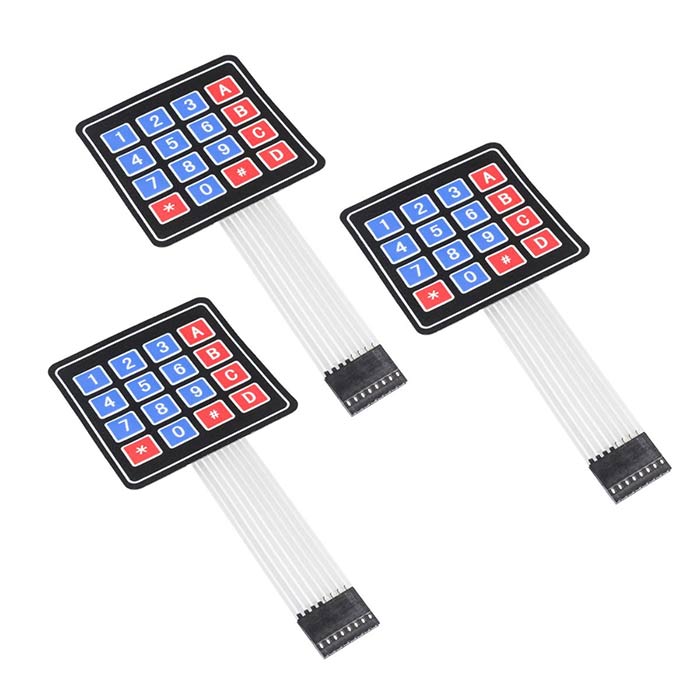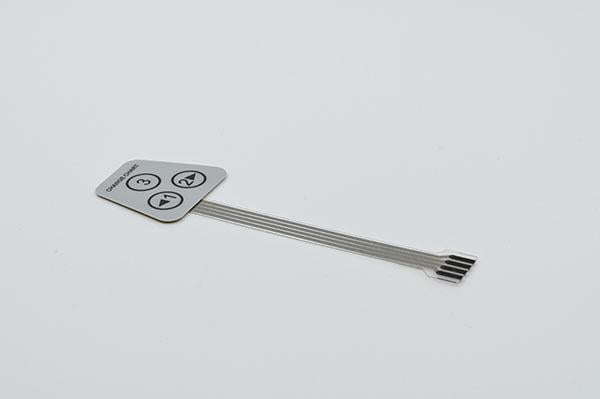All About Membrane Layer Switch: Comprehending Its Layout and Functionality
When you consider the control user interfaces in modern-day tools, membrane layer buttons commonly enter your mind. These components are greater than simply switches; they blend design and performance effortlessly. Recognizing how they function and what makes them effective can change your perspective on everyday electronic devices. Yet, there are nuances to their style and performance that you may not recognize. Allow's explore what collections membrane layer switches aside from various other control systems.
What Are Membrane Switches?

Their smooth nature makes them simple to tidy and immune to dust and dampness, a crucial function in numerous environments. Membrane buttons can additionally be personalized relating to shape, dimension, and graphics, permitting suppliers to produce distinct interfaces customized to particular products. Plus, they're light-weight and thin, which helps in decreasing the general bulk of devices. On the whole, membrane layer switches play a substantial function in boosting customer experience across a wide selection of applications.
Exactly How Membrane Switches Over Work
When you push a secret on a membrane switch, it turns on a simple yet effective device. membrane switch manufacturer. The leading layer, commonly made of versatile product, pushes down onto a conductive layer underneath it.
You'll see that the tactile comments varies based upon the button design, providing either a soft click or an extra obvious action. As soon as you launch the trick, the membrane returns to its initial placement, reopening the circuit and quiting the signal. This procedure occurs nearly instantly, making sure a responsive individual experience.
Membrane switches are preferred because of their resilience and resistance to dirt and wetness, making them ideal for numerous applications, from family appliances to medical tools. Recognizing this procedure helps you value their widespread use.
Secret Parts of Membrane Buttons
Recognizing the vital parts of membrane switches is essential for understanding their functionality and design. The safety layer guards against ecological aspects and use, expanding the button's life expectancy. By comprehending these elements, you'll acquire understanding right into exactly how membrane layer switches run and their importance in different applications.
Products Used in Membrane Layer Switch Over Layout
The performance and durability of membrane layer switches over greatly depend upon the materials utilized in their style. You typically encounter polyester and polycarbonate as main substratums due to their outstanding strength and versatility. These materials resist scrapes and chemicals, making them optimal for requiring settings.
The conductive layers often utilize silver or carbon, chosen for their reliability and conductivity. membrane switch manufacturer. Silver gives premium efficiency, while carbon is an economical alternative. For the overlay, you may consider a matte or shiny coating, depending on your aesthetic demands and customer experience
Make certain to select adhesives that endure ecological variables like temperature level and moisture. Selecting the ideal materials will guarantee your membrane switch stands the test of time.
Layout Factors To Consider for Membrane Layer Buttons
While designing membrane layer buttons, it's important to take right into account different elements that influence their performance and individual experience. Start by focusing on the layout and button size; make certain they're user-friendly and simple to browse.
Verify your design accommodates ecological variables, like dampness or temperature variants, which might impact performance. By meticulously considering these aspects, you'll develop a membrane layer switch that improves usability and complete satisfaction.
Applications of Membrane Buttons
Membrane buttons are functional components discovered in numerous applications, from commercial devices to customer electronics. You'll see their effect in equipments that require sturdy interfaces and in gadgets that take advantage of streamlined designs. Understanding these applications aids you appreciate the performance and usefulness of membrane buttons in daily technology.
Industrial Devices Usage
When you're looking to boost the capability of industrial equipment, membrane buttons supply a trusted option that incorporates durability with easy to use layout. These switches are best for rough environments, offering resistance to dirt, wetness, and chemicals. Embrace membrane buttons to enhance your operations and enhance general efficiency.
Consumer Electronic Devices Assimilation
In the domain name of consumer electronics, membrane buttons play a vital function in improving customer interaction and tool capability. Membrane layer pop over to this web-site buttons additionally guarantee durability and resistance to dirt and moisture, extending the life-span of your electronic devices. By choosing membrane layer buttons, you enhance not simply the performance yet additionally the style of your devices, making daily communications smooth Find Out More and delightful.
Advantages and Disadvantages of Membrane Buttons
While membrane layer buttons offer an array of benefits, they likewise come with some drawbacks that you ought to think about. One considerable benefit is their small layout, making them perfect for space-constrained applications.

Nonetheless, there are disadvantages. Membrane switches can have a much shorter lifespan contrasted to mechanical switches, particularly under heavy use. They can additionally be much less tactile, which might influence user comments during operation. Moreover, if harmed, repairing them can be tough and usually requires complete substitute. Eventually, their level of sensitivity to severe temperature levels and ecological problems might restrict their effectiveness in particular settings. Stabilizing these benefits and drawbacks will certainly help you establish if membrane layer buttons are the right suitable for your task.
Regularly Asked Concerns
Just How Lengthy Do Membrane Changes Normally Last?
Membrane switches normally last in between 5 to ten years, depending on usage and ecological problems. You'll wish to examine variables like wear, exposure to dampness, and temperature changes to evaluate their long life properly.
Can Membrane Switches Be Custom-made for Details Styles?
Yes, you can customize membrane switches to fit details styles (membrane switch manufacturer). You'll have the flexibility read the article to choose shades, forms, and layouts that match your job's requirements, guaranteeing they mix seamlessly with your total aesthetic
What Is the Expense Variety for Membrane Layer Switch Over Manufacturing?
The price variety for membrane button production usually drops in between $1 and $10 per unit, depending upon elements like layout intricacy, quantity, and materials. You can get quotes from makers to discover the most effective option.

Are Membrane Layer Changes Waterproof or Immune?
Membrane layer switches can be created to be water-proof or resistant, depending on materials made use of and building and construction approaches. If you need them for damp settings, guarantee you specify those requirements during the design procedure.
Just How Do Membrane Switches Over Contrast to Typical Switches?
Membrane switches are typically thinner and extra flexible than typical buttons, supplying a smooth layout. They're typically easier to clean up and incorporate, but could not give the tactile responses you're utilized to with mechanical choices.
Conclusion

Comments on “An creative membrane switch manufacturer can provide modern features and materials.”